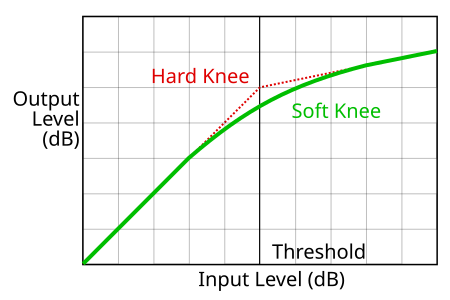This just came up on the mailing list because at least some implementations use Automatic Make-up Gain, which is not a ubiquitous feature on real, professional compressors. After looking in the spec, it's not even specified whether the DynamicsCompressorNode should use auto make-up or not. This (make-up gain) should probably be a user option.
 This is where most of the magic happens in the current implementations, this is full of magic numbers that produce a smooth curve. I don't think the curve itself should be specced, but it's reasonable to more-or-less shape the characteristics of the curve.
This is where most of the magic happens in the current implementations, this is full of magic numbers that produce a smooth curve. I don't think the curve itself should be specced, but it's reasonable to more-or-less shape the characteristics of the curve.
Currently the spec doesn't provide much information on what the algorithm behind DynamicsCompressorNode should look like, which is not very helpful for implementers.